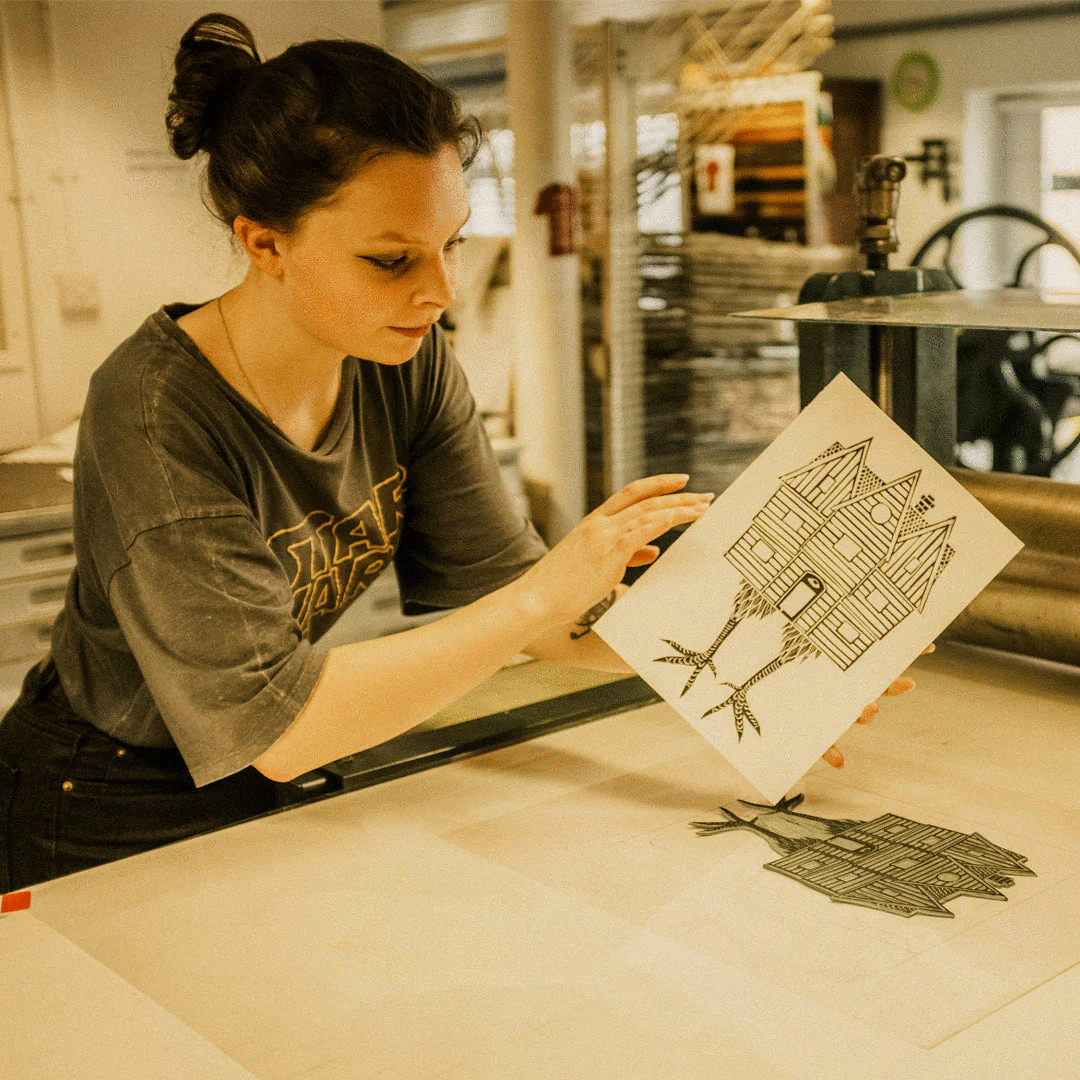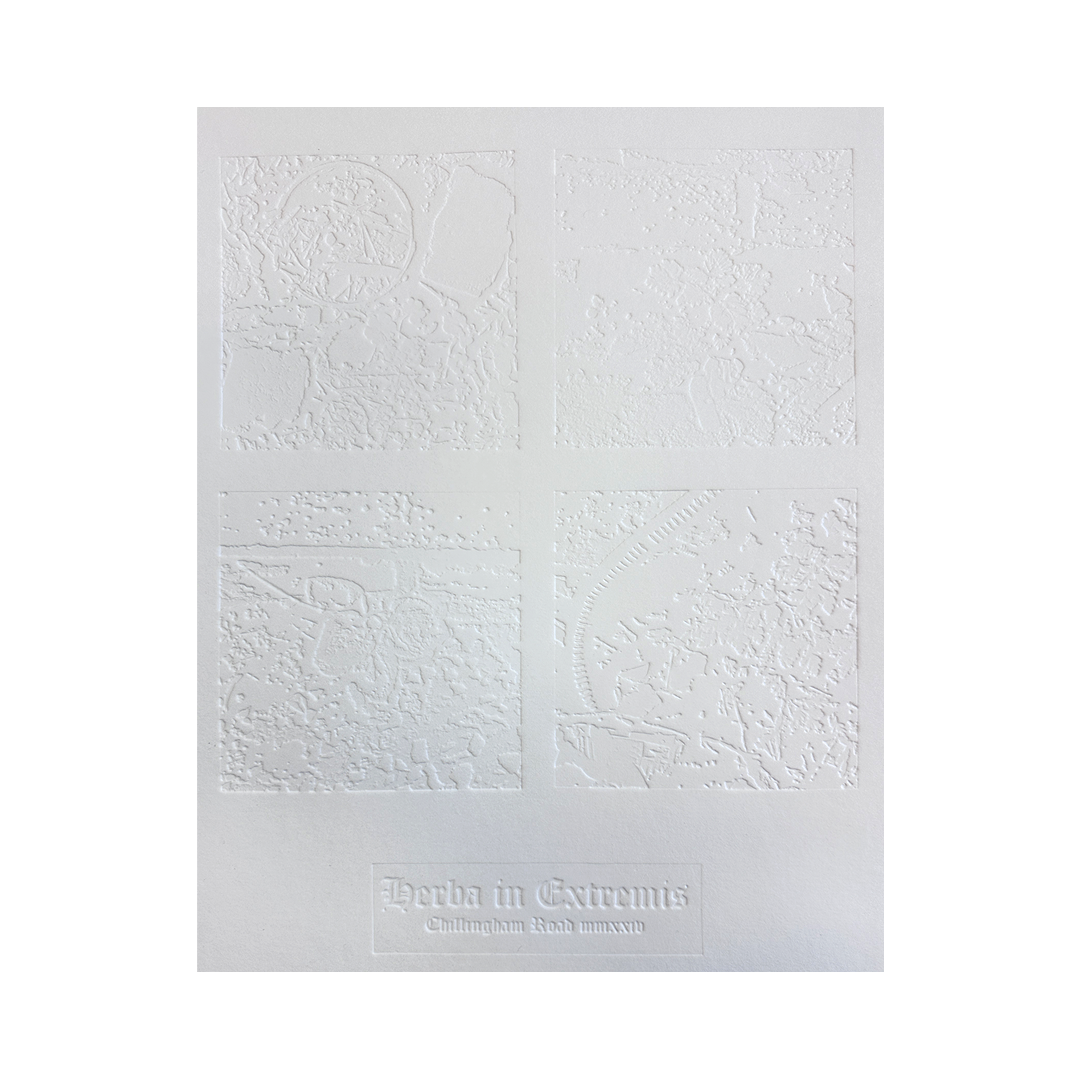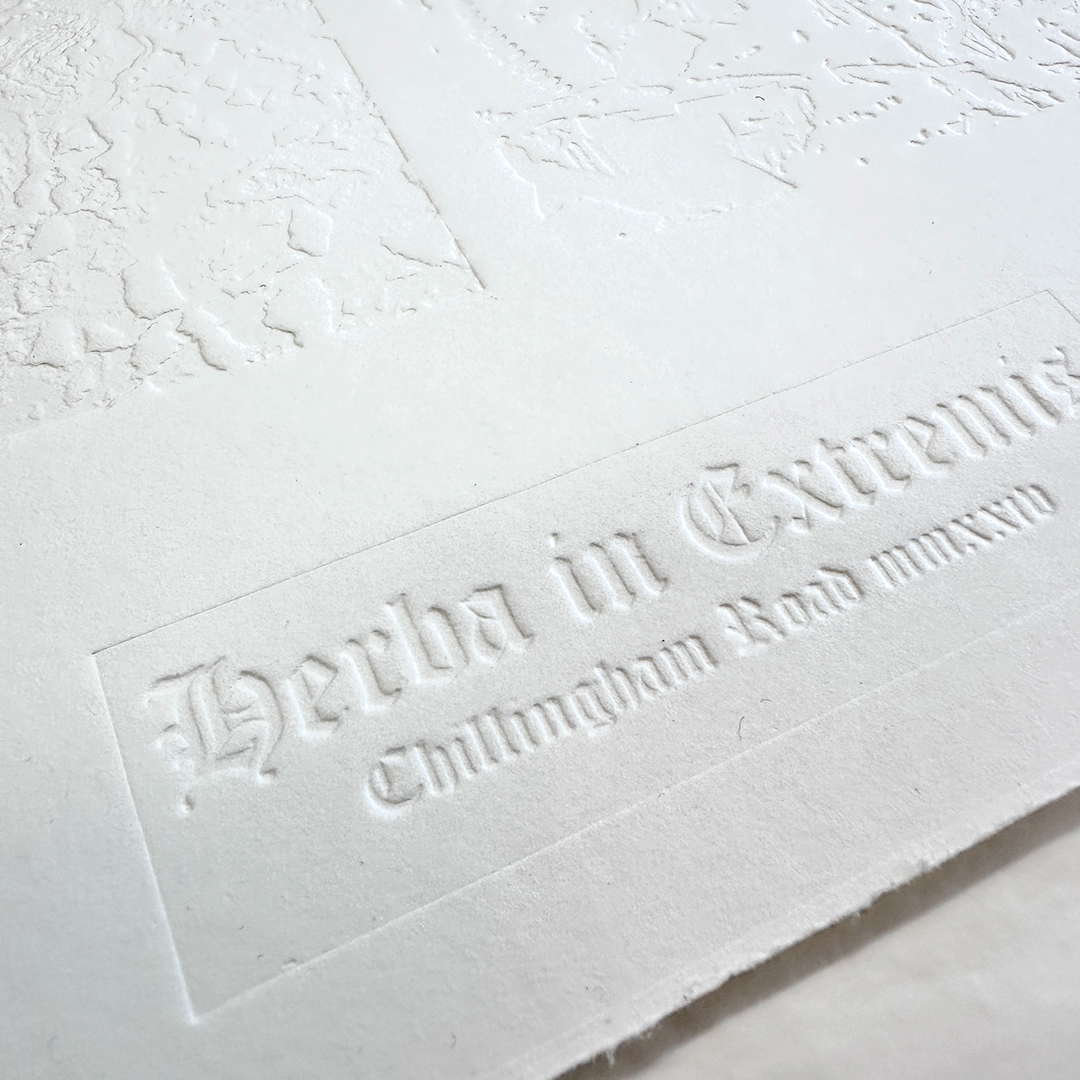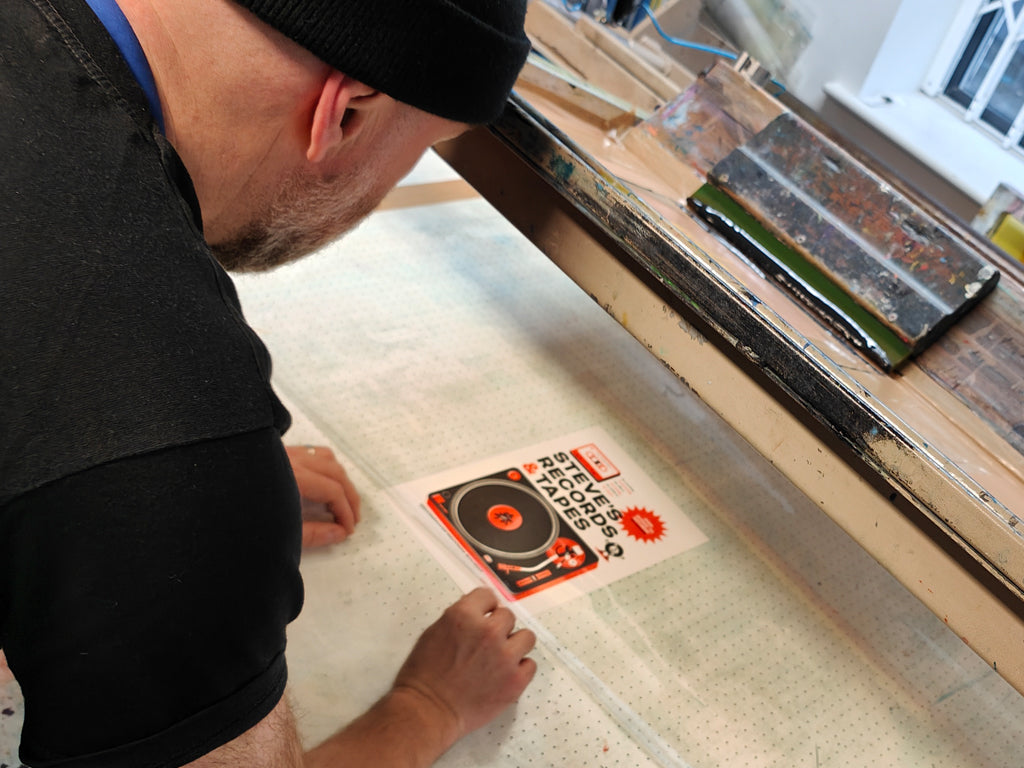Herba In Extremis
Herba In Extremis
Artist: Chris Madge
Medium: Embossed Solar Plate
Dimensions: Paper Size 38 x 30cm / Image Size 34 x 26.5cm
Edition: 3
Postage & Packing
Postage & Packing
£9 UK postage & packing in secure postal tube.
By selecting this option, you confirm that you want to apply Gift Aid.
Couldn't load pickup availability
Share
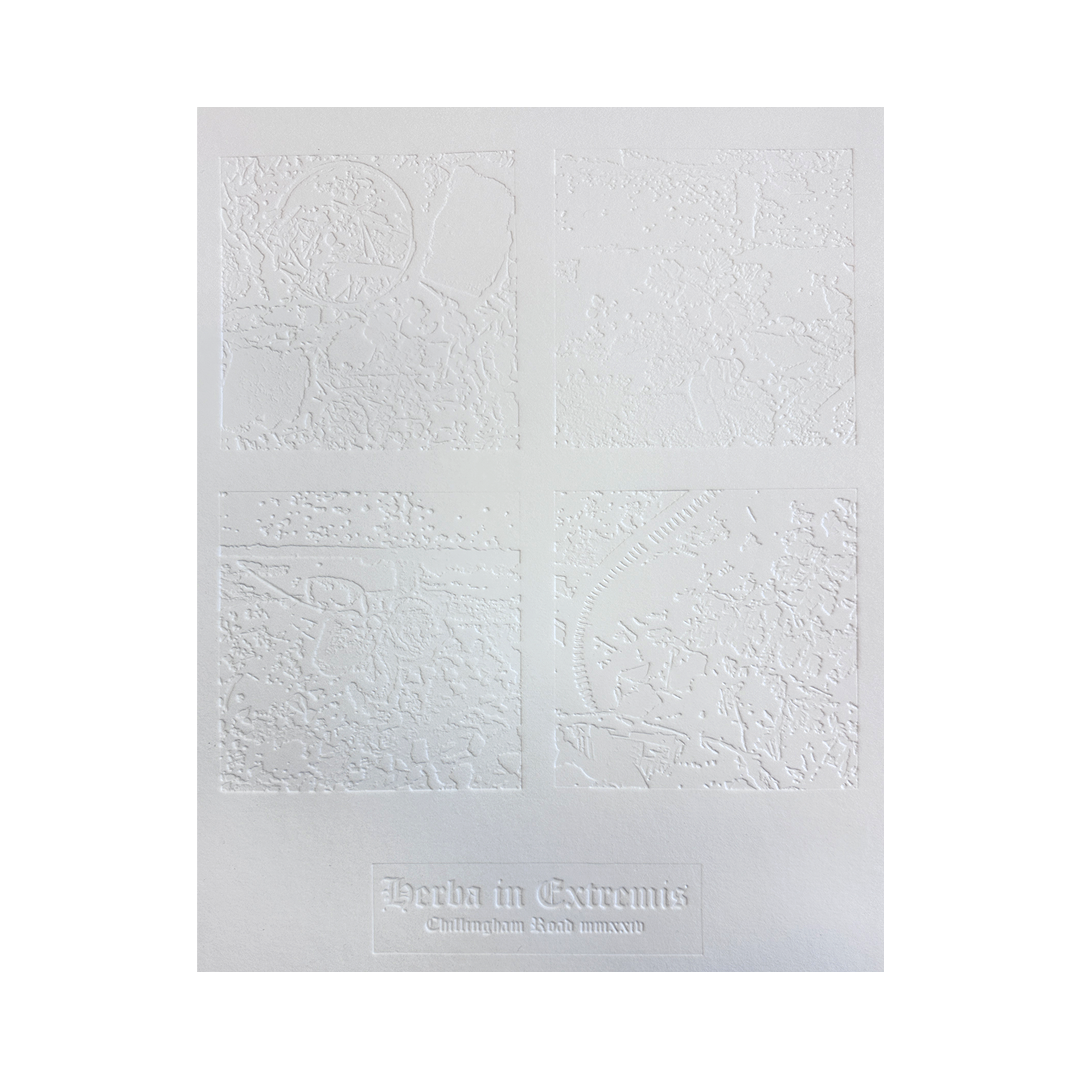
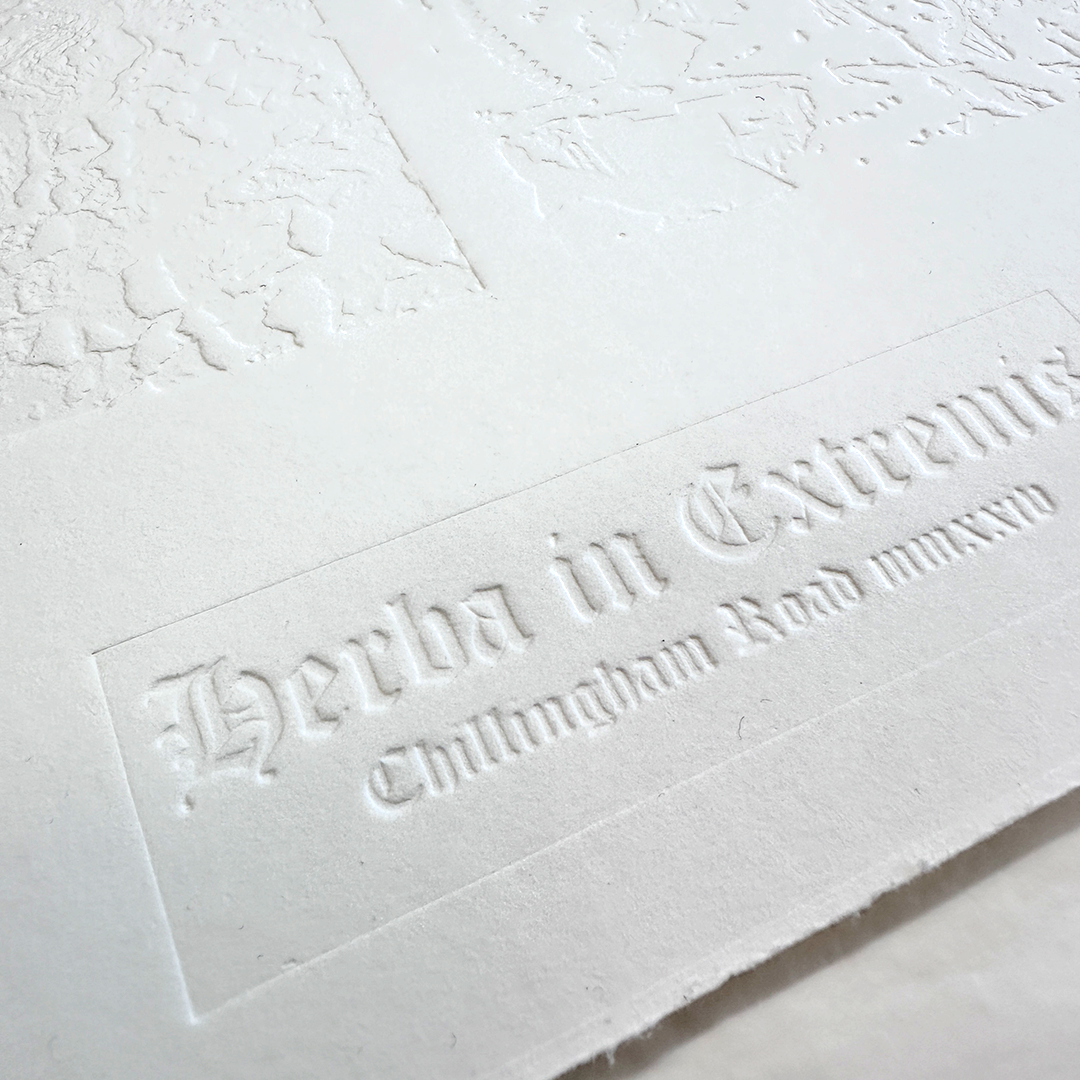
Information
-
About this print
Many plants have a remarkable ability to survive and thrive in the most inauspicious places such as a dried up bank of a reservoir, the cracks in a pavement or amongst the fag ends and litter on a street planter. These images were made from photographs of plants discovered in a local shopping street. They celebrate the work of Wylliam Turner of Morpeth who printed 'A New Herball' in 1551 and is considered to be the father of English botany. His illustrations are simple but elegant fine line drawings cut on wood block, often four prints to the page. My photographs have been converted to stark black in white bitmaps. Modern technology and new materials like photopolymer coated mylar plates have enabled me to create embossing plates bringing a third dimension of texture and depth of the printed illustrations. The force required to create the embossed image also acknowledges the strength of the emerging plants.
-
Endless Forms, Most Beautiful
Read MoreA new bestiary and herbarium for at risk species by artists from Northern Print.
“Endless Forms Most Beautiful” is made possible with The National Lottery Heritage Fund. Thanks to National Lottery players, we have been able to support visits, new printmaking and school’s programme for this project.
Northern Print artists bring together traditional printmaking and the natural world with a series of new prints highlighting the diversity of species that are categorised as ‘at risk’.
The ‘endless forms’ include marine life; plants; birds; insects and mammals with many familiar and much-loved species as well as less known and intriguing creatures that have captured the imagination and hearts of Northern Print’s artists.
This exhibition of 45 new prints has been made following a series of visits to our region’s natural history collections and habitats and represents the tiniest tip of the iceberg of our natural world under threat.
The artwork includes a range of approaches and printmaking processes – including heritage craft skills also deemed at risk including letterpress and mould-made papers
